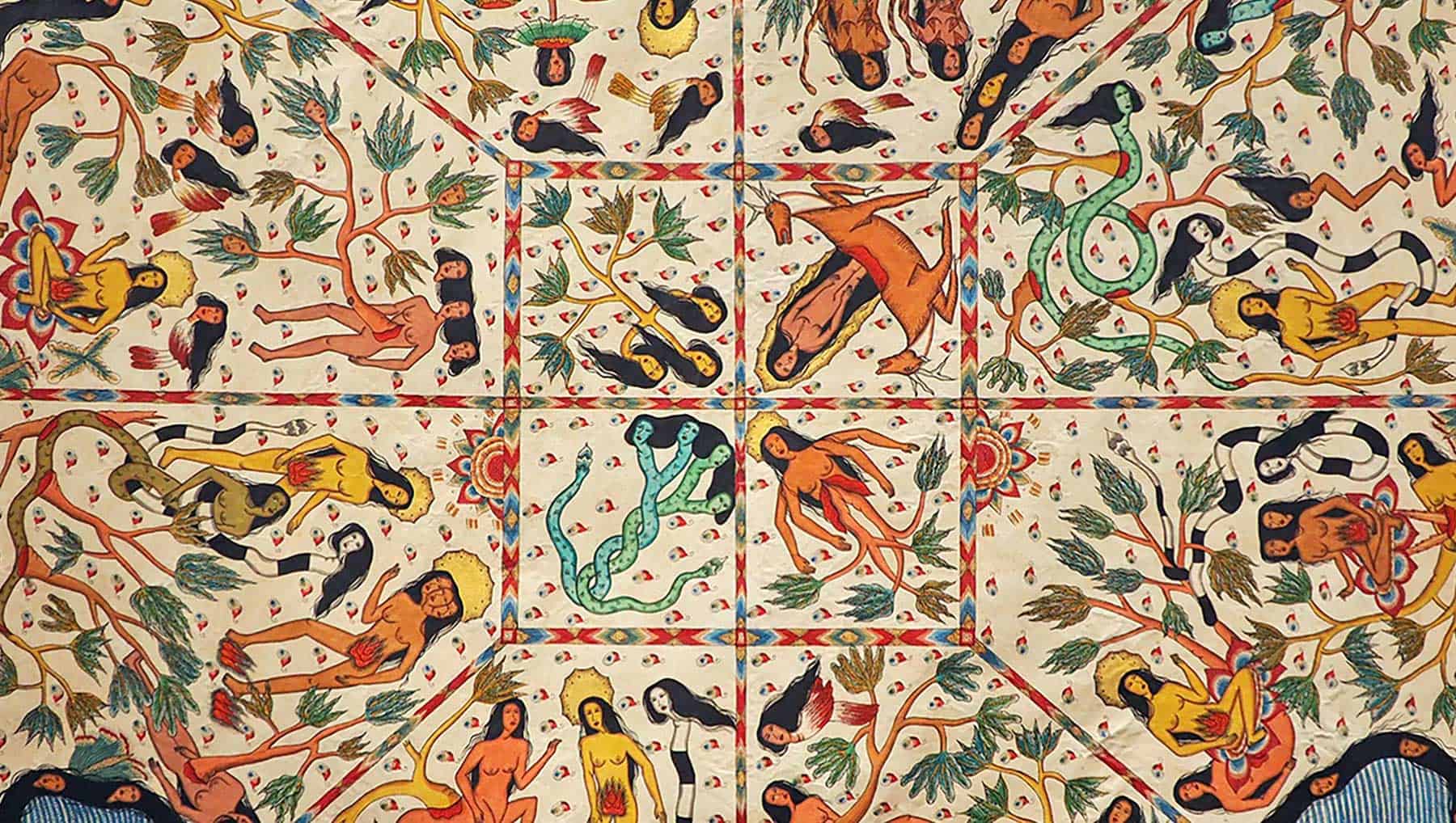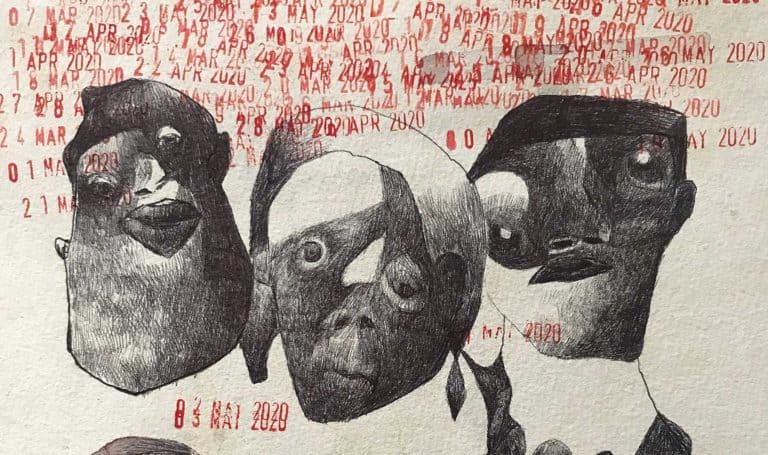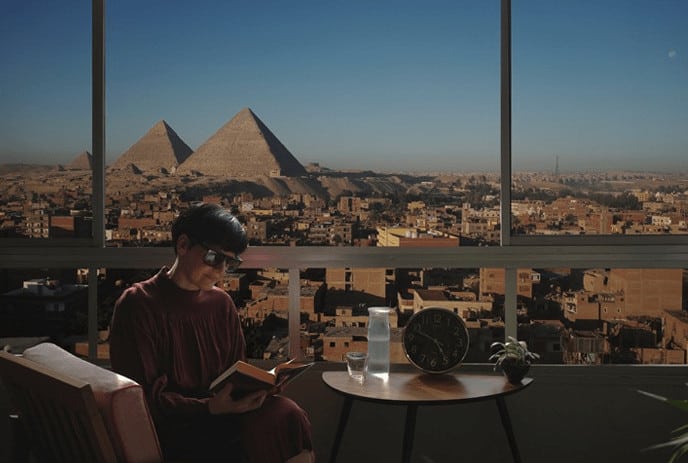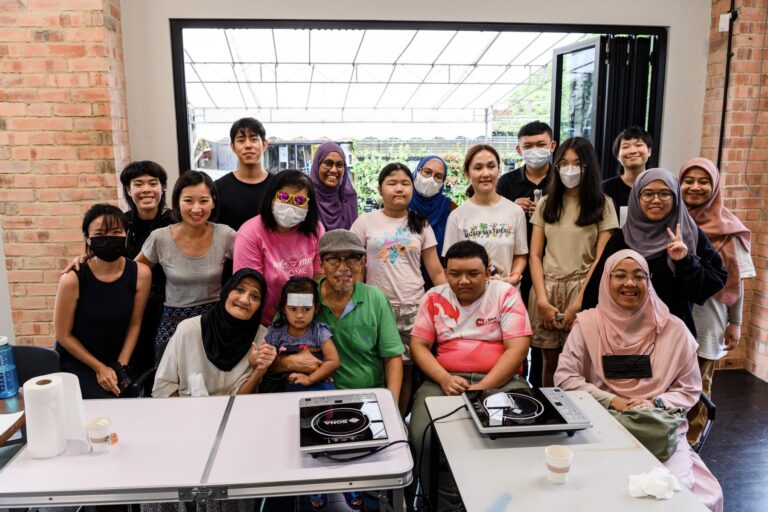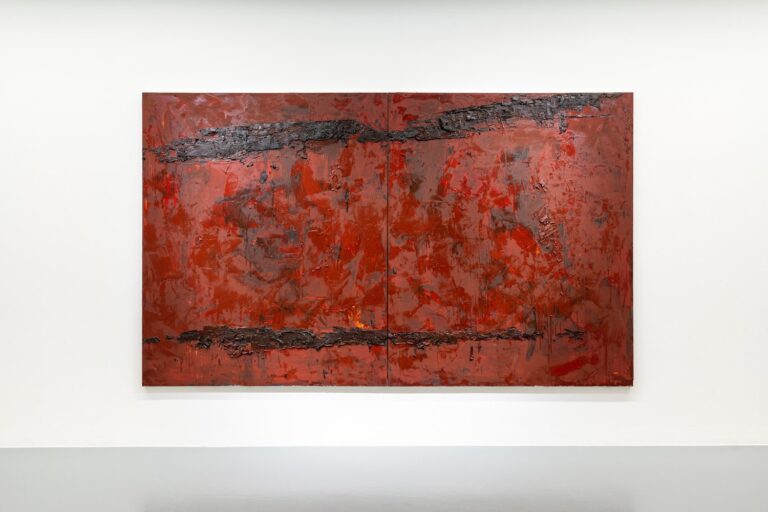“We grew up learning about male heroism. In traditional texts, female characters appear only as objects of conquest and sexuality,” says Citra Sasmita, one of the most game-changing Balinese artists working today. With her practice, she is challenging the ground of a stale societal order:
“I’m creating counter-narratives by placing female characters as the protagonists in mythological stories,” she explains.
Her latest work is a three-panel painting, dense with fiery figures. It’s the sixth installment of her ongoing Timur Merah Project, which explores the heritage narratives from Indonesia and Bali. She focuses on the canonical texts that form the basis of stories such as the Babad Panj – a cycle of Javanese stories centred around the legendary prince of the same name from East Java, Indonesia.
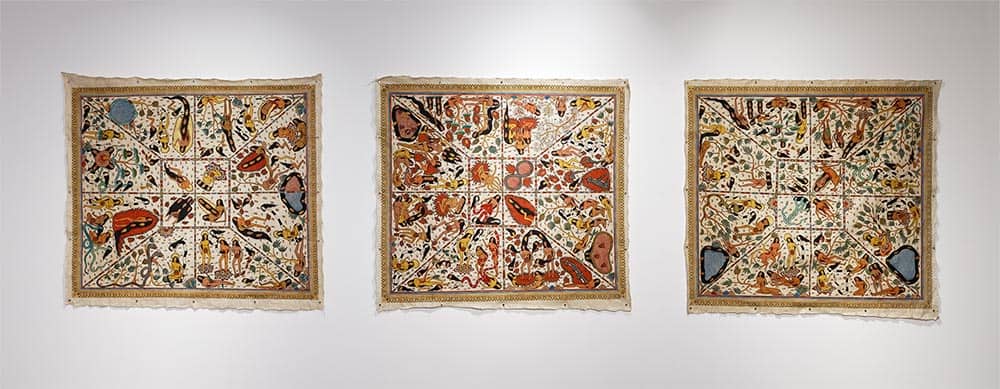
Curator Loredana Pazzini-Paracciani, who selected Citra Sasmita’s new work to be part of the group show A Life Beyond Boundaries (The Geography of Belonging) at JWD Artspace Bangkok says, “When I first unveiled the canvases I felt the power of a contemporary narrative that, with her feminist bent, provokes new cultural perspectives and trajectories beyond strict national definitions.”
“The artist adopts the traditional Kamasan painting technique, typical of Bali and historically executed by men,” the curator continues. “She creates large installations and works that reframe the patriarchal Balinese culture by adding ubiquitous female figures representing life and nature.”
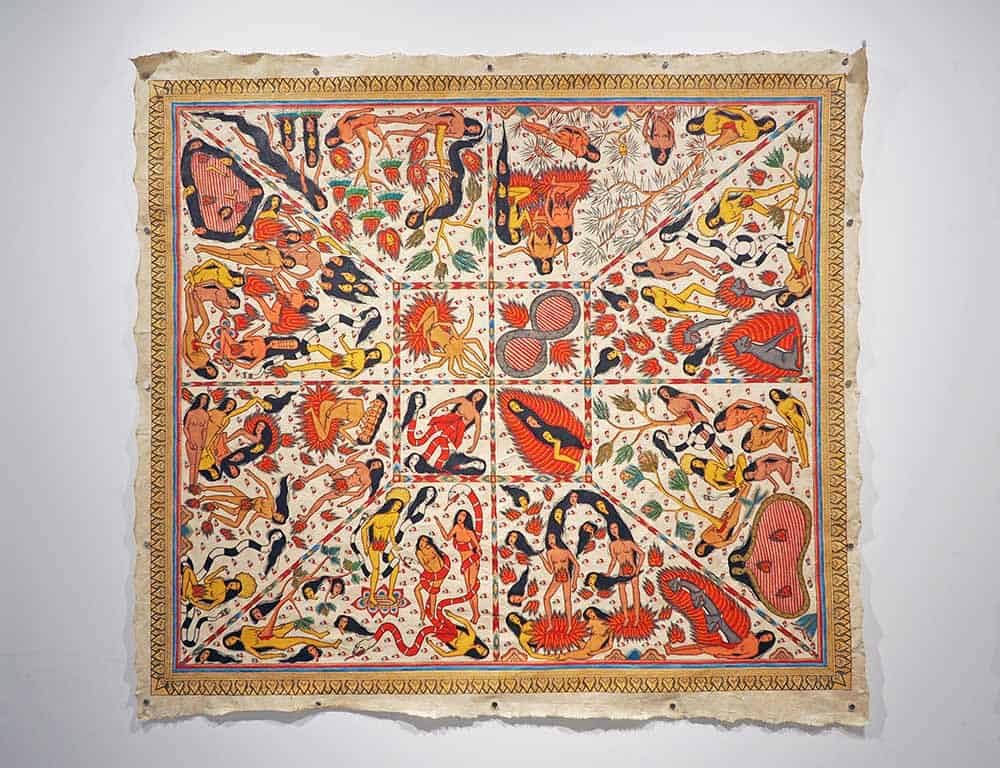
Can you tell us how this latest installment from the Timur Merah Project came to be?
The works draw from the ceiling paintings of the Kertagosa Museum in Klungkung, a historical site in Bali that used to be the Kertagosan royal court. These fresco scenes include the Bhima Swarga (a part of one of the most important Hindu epics, the Mahabharata), which narrates a journey through heaven and hell.
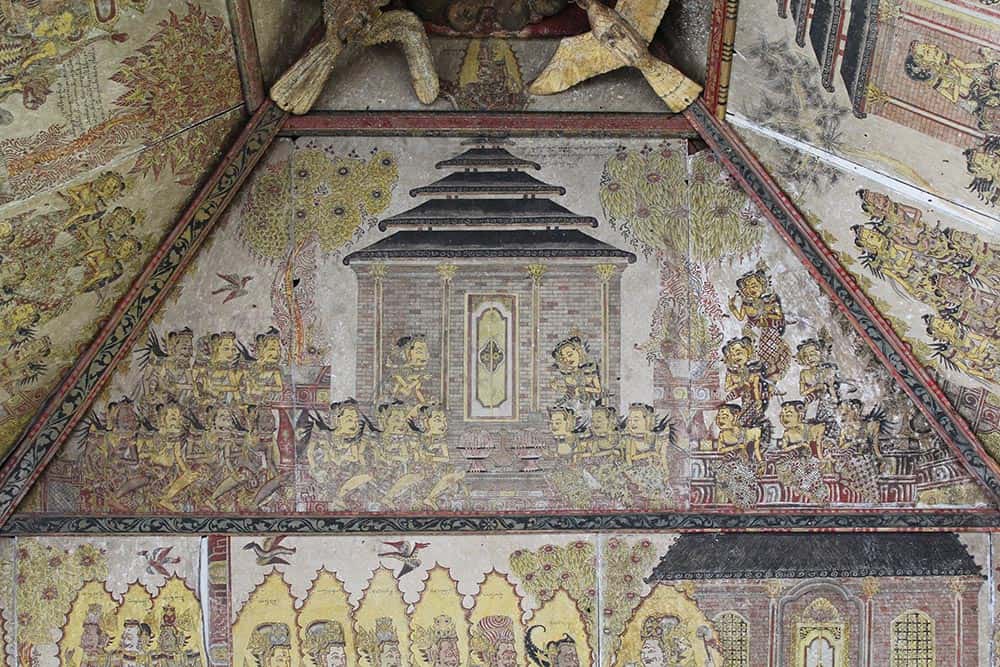
The king, or raja (Dewa Agung Gusti Sideman, who ruled until 1775), would consult the fresco to decide how he would sentence the convicts who were trialed in court. The tradition carried on when in 1909, Kerthagosa became the official Court of Justice for the region of Klungkung. The artworks thus tell of social and cultural narratives that have influenced past governmental decisions. It is interesting to me how the government to this day bases their decisions and behavioural models on old literature. Canonical texts still represent the tenets upon which the Indonesian state is founded.
You were born and grew up in Bali, and Balinese identity is indeed central in your art practice. Is tradition something that you consciously insert in your work?
Being Balinese means living a paradoxical reality. Balinese landscape and traditions, as well as the philosophy of an harmonious community, have an exotic appeal to foreigners. However, what they never see are the human and tragic side of our culture. I grew up with stories about women who had to show loyalty to their husbands by performing ritual satiism (also known as sutteeism), namely by throwing themselves into the flames when their husbands are being cremated. This tradition was abolished by the Dutch in 1915. There has also been a series of other tragedies in Balinese history, such as the mass suicide of Puputan Badung, or the 1965 massacre.
So in my practice, I looked for symbols that I could use as a language to criticise the practice of over-romanticising traditions and culture in Bali. My visual journey doesn’t start with a traditional identity. The landscape of my visual memory consists mostly of nature and mysticism, as well as narratives about women in transition between tradition and modernity.
How did you develop your Kamasan Balinese painterly language?
My exploration of Kamasan stems from the question of what is the bargaining value of Bali in the art scene in Indonesia, which is always centralised. That’s why Bali tends to be considered “too ethnic” and cannot become an important part of national, and perhaps international, geopolitical ideas. Bali, a small island in the archipelago, has been known as a tourism paradise that presents its arts and culture as the main dish on the menu. This perspective on the commodification and commercialisation of art is often a difficult challenge for new perspectives, such as the politics of feminism, whereas keeping Balinese culture sustainable really requires a more reflexive and critical perspective.
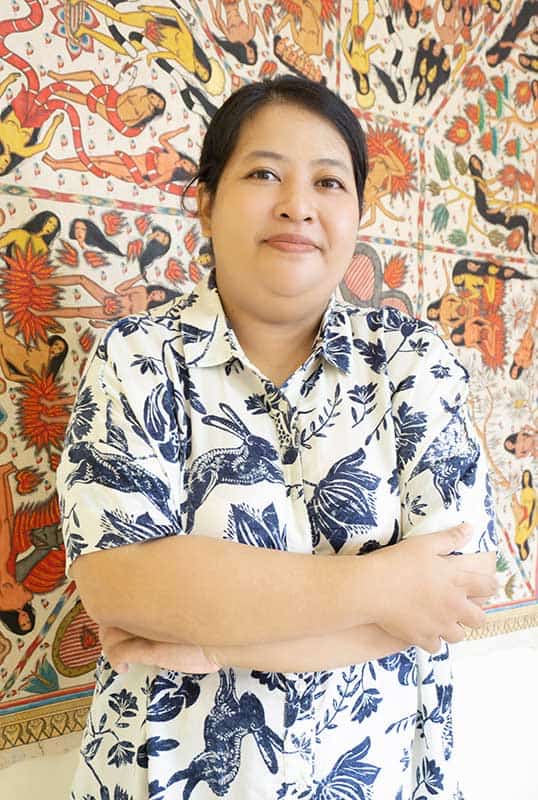
In 2018 you started conducting interviews with Mangku Muriati, a female priest and Kamasan painter. Can you tell us about your findings about this style of painting?
Women in the Kamasan community are generally just colourists who don’t possess knowledge about the construction of the narratives. From generation to generation, the narratives of wayang (an ancient form of Indonesian storytelling, told through paintings or shadow puppet theatre) stories are mostly passed down through male lineages, so those who master the ability to compose narratives and sketches from Kamasan paintings are generally men.
Mangku Muriati was lucky to have been chosen by her father, maestro Mangku Mura, to continue the clerical lineage, as well as inherit important narratives and books on philosophy and wayang. That’s what enabled her to become a sangging (a skilled artisan) who mastered every stage of wayang painting, from composing narratives, sketching, to colouring.
My interest in female heroism – a subject that is rarely found in old manuscripts and classic Kamasan paintings – started in 2019, when I was invited to the Jogja Biennale to respond to marginalised narratives. I presented the Timur Merah Project as a painting installation. The concept was to show how the essence of wayang – which has been only 2-dimensional so far – has also the power to respond and give meaning to space. In Balinese architecture, the spirituality of space is always considered, especially in relation to the individual body and society. Indeed, the function of Kamasan painting is not only to decorate the temple but also to convey a narrative.
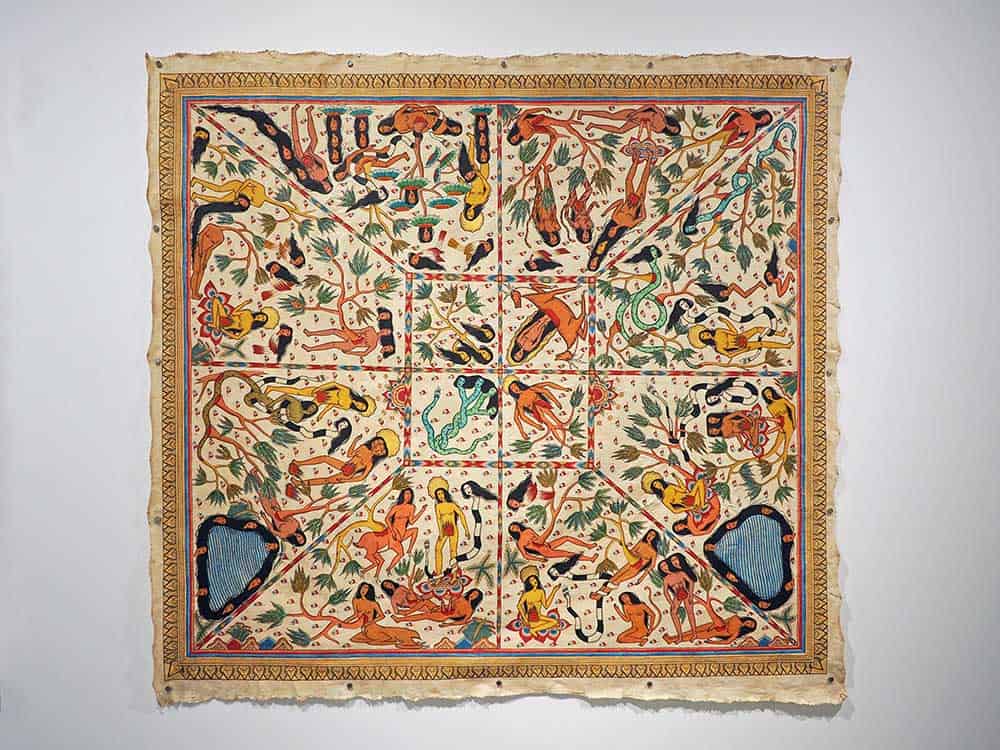
What mythologies did you research to find the powerful female figures that you depict in your Timur Merah Project?
Balinese people inherit the story of Calonarang, a witch who spreads plague throughout the country, or the story of Goddess Durga who was cursed by Lord Shiva, and deemed a terrible figure for her unfaithfulness. Male-centric literary works depict female characters who are intelligent and strong as villains or monsters. This inevitably shapes people’s perceptions of women. From great-grandmothers, grandmothers, to my own mother, they have lived all this time in this perception, which makes them teach their daughters to be quiet and not to be critical, because otherwise they’d have to face social judgment.
While the characters of Calonarang and Durga are not specifically included in the Timur Merah Project, they form the basis of my understanding of the depiction of female characters in old texts. In my work I can flip the script and turn these antagonists into new characters that are more equal and empowered. This project is a tribute to my maternal ancestors who have fought in silence. I invoke them in the heroic narratives.
An important step in you becoming a working artist was meeting Bali Post’s director Oka Rusmini in 2012. She is also a great novelist who recounts the experience of Balinese women. Could you tell us more about your relationship with Oka?
Oka Rusmini has been my mentor while I was working at Bali Post. She encouraged me to explore modern literature more deeply, which has become an important process in the development of my artwork. She also encouraged me to write poetry, essays and fiction stories in addition to creating visual works. That’s how I realised that both visual arts and literature are mediums that can be used to express ideas and visions of what an artist wants to convey, and how works of art can open up a discourse about something besides formalism and aesthetic, such as the issue of women in Bali.
Her novel Tarian Bumi reflects the dark side of reality experienced by Balinese women. It became my initial motivation to explore and analyse the patriarchal problems in Bali more objectively.
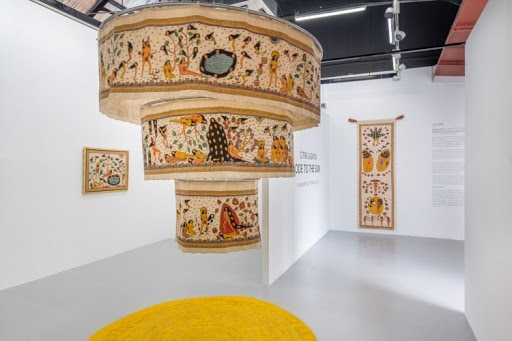
In your installation Ode to the Sun (2019), you touch on the impact of international trade and colonialism on the formation of Balinese identity and culture. What were some reflections that went into the making of that work?
It’s important to note that the cultural influences through trade didn’t just occur naturally, but were also formed through political penetration. As is well known, post-colonial Balinese culture is a manifestation of Europeans’ orientalism of nations in the far east. Through Baliseering politics, the Dutch colonial government mobilised Balinese kings to reconstruct the culture of the noble Balinese people to build their heavenly dreams. Social and political practices in Bali turned into massive religious festivals without necessarily recovering its essence. Therefore, every critical question about Balinese culture is also a critical question about the post-colonial situation that has taken place and has shaped Balinese culture to this day.
I picked a fight some time weeks ago with a retrograde intellectual, who sees feminism as something ultimately relevant only to white rich women in the West. Do you ever encounter this kind of opinion (feminism seen as connected to colonialism) from an educated but close-minded public, with regard to your work?
I often encounter the fear and doubt of many other artists regarding the term feminism when it is related to the Indonesian context, especially in Bali. According to some art critics, it’s a foreign term that is not in accordance with the eastern spirit that exists in Indonesia. But I don’t want to get stuck in terminology. If feminism has become a universal ideology and language to express siding with women, I accept it as a way of reading my artistic practice.
In Bali, the practice of educating women dates back to the colonial period in the 1930s in the northern Bali area. This gave birth to several gender equality movements in culture and politics, not only in Bali, but also in Java and other islands. Then there were the women’s political movements that emerged after Indonesia’s independence, which carried on the combative spirit from the previous movements.
In my work, most of the figures are depicted as resisting hierarchy. This is my criticism of feudalism which is deeply rooted in Balinese culture.
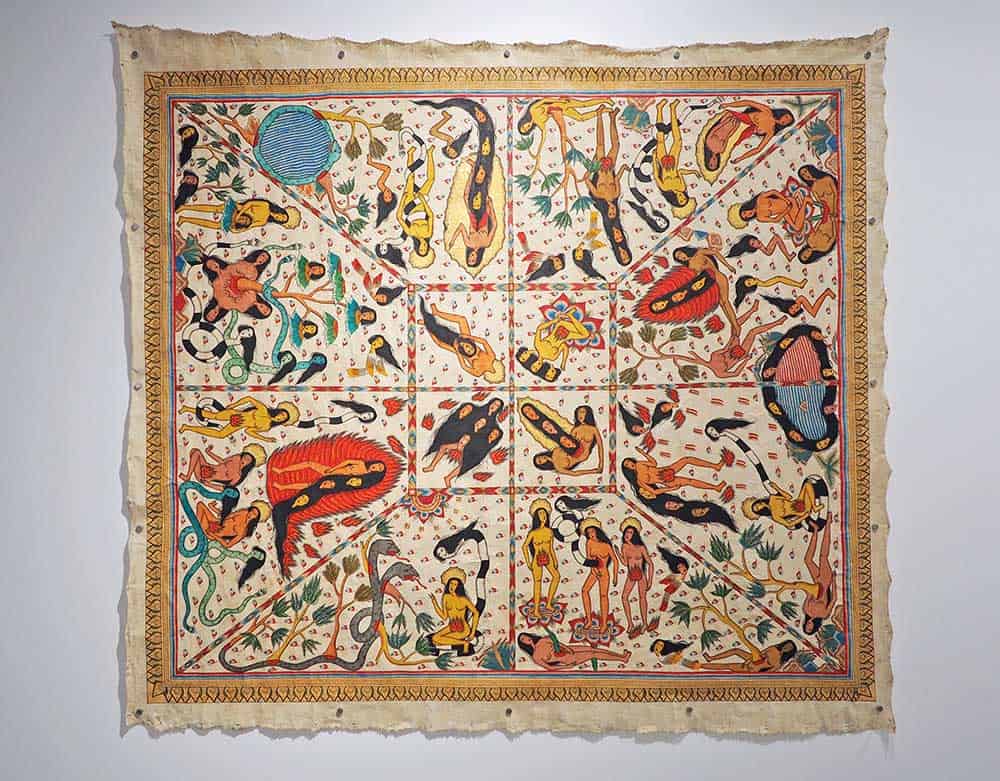
Do you see artists in Indonesia, and Bali in particular, participating and contributing to social change and gender equality?
Not too many art archives record the works of female artists in detail. It is something that has been marginalised so far, so the younger generation struggles to read about their seniors. Before the pandemic, our collective Futuwonder had raised this issue and started a movement to write about female artists on Wikipedia. We had an exhibition that invited female artists who responded to women’s issues. Even though our movement is carried out in an alternative space, it encouraged new talents by providing space and opportunities to show the work.
I believe that artists are constantly recording the spirit and challenges of the times and the realities they face. An artwork is the deposit of the knowledge that artists and their community have gained through their experiences. That’s why I really hope that an increasing number of women writers and artists will share their ideas and experiences.
___________________________________
Citra Sasmita’s work is currently showing at A Life Beyond Boundaries (The Geography of Belonging) at JWD Art Space, Bangkok until 30 September 2021. For more information, check out their website.
